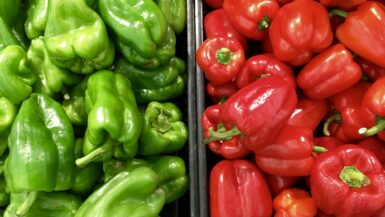Maintaining a healthy diet is crucial for overall well-being and longevity. The foods we eat have a direct impact on our physical and mental health, and a high-fiber, low-fat diet has been shown to provide numerous benefits. This type of diet is rich in plant-based foods, such as fruits, vegetables, legumes, and whole grains, which are high in fiber and low in fat. In this article, we will explore the various benefits of eating a high-fiber, low-fat diet and how it can improve your health and well-being.
What is a High-Fiber, Low-Fat Diet?
A high-fiber, low-fat diet is a way of eating that focuses on consuming foods that are rich in fiber and low in fat. The primary goal of this diet is to improve overall health by promoting healthy digestion, reducing the risk of chronic diseases, and aiding in weight loss. Fiber is an essential nutrient that is found in plant-based foods such as fruits, vegetables, whole grains, and legumes. It is beneficial for the body as it promotes healthy digestion and helps to regulate blood sugar levels. On the other hand, consuming too much fat can lead to weight gain and increase the risk of heart disease. Therefore, a high-fiber, low-fat diet is an excellent way to maintain a healthy weight and reduce the risk of chronic diseases.
The Importance of Fiber in the Diet
Fiber is a type of carbohydrate that cannot be digested by the body. It is found in plant-based foods such as fruits, vegetables, whole grains, and legumes. Although fiber is not digested, it plays a crucial role in maintaining a healthy digestive system. It helps to regulate bowel movements and prevent constipation by adding bulk to the stool. Fiber also promotes the growth of healthy bacteria in the gut, which is essential for overall health.
In addition to promoting healthy digestion, fiber has numerous other health benefits. It can help to lower cholesterol levels and reduce the risk of heart disease by binding to cholesterol in the digestive tract and preventing it from being absorbed into the bloodstream. Fiber also helps to regulate blood sugar levels by slowing down the absorption of glucose in the bloodstream. This is especially important for people with diabetes, as it can help to prevent spikes in blood sugar levels.
Furthermore, fiber is an essential nutrient for weight loss. Foods that are high in fiber tend to be low in calories and can help to keep you feeling full for longer periods. This can help to reduce calorie intake and aid in weight loss.
Overall, fiber is a crucial nutrient that should be included in a healthy diet. A high-fiber, low-fat diet is an excellent way to ensure that you are getting enough fiber in your diet while also promoting overall health and well-being.
The Benefits of a High-Fiber, Low-Fat Diet for Weight Loss
Maintaining a healthy weight is essential for overall health and well-being. A high-fiber, low-fat diet can be an effective way to aid in weight loss. Foods that are high in fiber tend to be low in calories, which can help to reduce calorie intake without sacrificing satiety. Additionally, fiber helps to keep you feeling full for longer periods, which can reduce the urge to snack between meals.
A high-fiber, low-fat diet can also help to reduce belly fat, which is a significant risk factor for chronic diseases such as heart disease and diabetes. Studies have shown that a diet high in fiber can lead to significant reductions in belly fat, even without changes in calorie intake.
Furthermore, a high-fiber, low-fat diet can help to reduce the risk of overeating by slowing down the absorption of nutrients in the digestive tract. This can help to regulate appetite and prevent overeating.
In conclusion, a high-fiber, low-fat diet can be an effective way to aid in weight loss and promote overall health. By incorporating more fiber-rich foods into your diet, you can reduce calorie intake, regulate appetite, and reduce the risk of chronic diseases.
The Role of Fiber in Reducing the Risk of Heart Disease
Heart disease is a leading cause of death worldwide. However, a high-fiber, low-fat diet can help to reduce the risk of heart disease. Fiber plays a crucial role in reducing cholesterol levels, which is a significant risk factor for heart disease. By binding to cholesterol in the digestive tract, fiber prevents it from being absorbed into the bloodstream. This can lead to significant reductions in LDL (bad) cholesterol levels, which can help to reduce the risk of heart disease.
Additionally, a high-fiber, low-fat diet can help to regulate blood pressure levels. High blood pressure is another significant risk factor for heart disease. Fiber has been shown to help reduce blood pressure levels by promoting healthy blood vessel function and reducing inflammation.
Furthermore, a high-fiber, low-fat diet can help to reduce the risk of developing type 2 diabetes, which is a significant risk factor for heart disease. By regulating blood sugar levels and reducing insulin resistance, fiber can help to prevent the development of type 2 diabetes.
Incorporating more fiber-rich foods into your diet is an excellent way to reduce the risk of heart disease. By consuming a variety of fruits, vegetables, whole grains, and legumes, you can improve overall heart health and reduce the risk of chronic diseases.
How a High-Fiber, Low-Fat Diet Can Improve Digestion and Prevent Constipation
Constipation is a common digestive problem that can be caused by a lack of fiber in the diet. A high-fiber, low-fat diet can help to improve digestion and prevent constipation. Fiber adds bulk to the stool, which helps to promote regular bowel movements. Additionally, fiber helps to promote the growth of healthy bacteria in the gut, which is essential for overall digestive health.
Furthermore, a high-fiber, low-fat diet can help to reduce the risk of developing hemorrhoids, which is a common complication of constipation. Hemorrhoids can be painful and uncomfortable, but they can be prevented by consuming a diet that is rich in fiber.
In addition to preventing constipation, a high-fiber, low-fat diet can also help to reduce the risk of developing colon cancer. Fiber helps to promote healthy bowel movements, which can help to eliminate toxins and waste products from the body. This can help to reduce the risk of developing colon cancer.
Overall, a high-fiber, low-fat diet is an excellent way to promote healthy digestion and prevent constipation. By consuming a variety of fiber-rich foods such as fruits, vegetables, whole grains, and legumes, you can improve overall digestive health and reduce the risk of developing digestive problems.
The Impact of a High-Fiber, Low-Fat Diet on Blood Sugar Levels and Diabetes
Diabetes is a chronic disease that affects millions of people worldwide. A high-fiber, low-fat diet can help to regulate blood sugar levels and reduce the risk of developing type 2 diabetes. Fiber helps to slow down the absorption of glucose in the bloodstream, which can prevent spikes in blood sugar levels. Additionally, fiber helps to reduce insulin resistance, which is a significant risk factor for developing type 2 diabetes.
Studies have shown that consuming a diet that is rich in fiber can help to reduce the risk of developing type 2 diabetes. Additionally, a high-fiber, low-fat diet can help to improve blood sugar control in people who have already been diagnosed with diabetes. By regulating blood sugar levels, a high-fiber, low-fat diet can help to prevent the development of complications associated with diabetes, such as nerve damage, kidney disease, and blindness.
It is essential to note that while a high-fiber, low-fat diet can be beneficial for people with diabetes, it is not a substitute for medication or insulin therapy. People with diabetes should work closely with their healthcare provider to develop a comprehensive treatment plan that includes dietary changes, medication, and regular exercise.
Incorporating more fiber-rich foods into your diet is an excellent way to promote healthy blood sugar control and reduce the risk of developing type 2 diabetes. By consuming a variety of fruits, vegetables, whole grains, and legumes, you can improve overall health and reduce the risk of chronic diseases.
The Benefits of a High-Fiber, Low-Fat Diet for Overall Health and Well-being
A high-fiber, low-fat diet can provide numerous benefits for overall health and well-being. By incorporating more fiber-rich foods into your diet, you can improve digestion, promote healthy weight loss, reduce the risk of chronic diseases, and improve overall energy levels.
One of the most significant benefits of a high-fiber, low-fat diet is its ability to promote healthy digestion. Fiber adds bulk to the stool, which can help to prevent constipation and promote regular bowel movements. Additionally, fiber helps to promote the growth of healthy bacteria in the gut, which is essential for overall digestive health.
Furthermore, a high-fiber, low-fat diet can be an effective way to aid in weight loss. Foods that are high in fiber tend to be low in calories, which can help to reduce calorie intake without sacrificing satiety. Additionally, fiber helps to keep you feeling full for longer periods, which can reduce the urge to snack between meals.
A high-fiber, low-fat diet can also help to reduce the risk of chronic diseases such as heart disease, diabetes, and certain types of cancer. Fiber helps to regulate blood sugar levels, reduce cholesterol levels, and promote healthy bowel movements, all of which can help to reduce the risk of chronic diseases.
Finally, a high-fiber, low-fat diet can improve overall energy levels and promote a sense of well-being. By consuming a diet that is rich in fiber and low in fat, you can provide your body with the nutrients it needs to function at its best.
Incorporating more fiber-rich foods into your diet is an excellent way to promote overall health and well-being. By consuming a variety of fruits, vegetables, whole grains, and legumes, you can improve digestion, promote healthy weight loss, reduce the risk of chronic diseases, and improve overall energy levels.
Tips for Incorporating More Fiber into Your Diet
Adding more fiber to your diet can be a daunting task, especially if you’re used to eating a diet that is high in processed foods and low in nutrient-dense whole foods. Here are some tips to help you incorporate more fiber into your diet:
1. Start Slowly
It’s important to gradually increase your fiber intake to avoid digestive discomfort. Begin by adding a few extra servings of fruits, vegetables, and whole grains to your diet each day. As your body adjusts, you can gradually increase your fiber intake to the recommended daily amount.
2. Choose Whole Foods
Whole foods are a great source of fiber, and they’re also rich in other important nutrients that your body needs. Choose whole grains, fruits, vegetables, nuts, seeds, and legumes to increase your fiber intake.
3. Make Simple Swaps
Small changes can make a big difference when it comes to increasing your fiber intake. Swap out white bread for whole-grain bread, choose brown rice instead of white rice, and snack on fresh fruit instead of processed snacks.
4. Get Creative with Recipes
There are plenty of delicious recipes that are high in fiber. Experiment with new recipes that feature whole grains, fruits, and vegetables. Look for recipes that use beans and lentils as a protein source.
5. Stay Hydrated
Fiber needs water to move through your digestive system, so it’s important to stay hydrated. Drink plenty of water throughout the day to help your body process fiber effectively.
Incorporating more fiber into your diet can have a significant impact on your health and well-being. By making simple swaps and choosing whole foods, you can increase your fiber intake and enjoy the benefits of a high-fiber, low-fat diet.
Foods to Include in a High-Fiber, Low-Fat Diet
When it comes to a high-fiber, low-fat diet, it’s important to choose foods that are both nutritious and filling. Here are some foods to include in your diet:
1. Fruits and Vegetables
Fruits and vegetables are rich in fiber, vitamins, and minerals. Aim to include a variety of colorful fruits and vegetables in your diet, such as berries, leafy greens, carrots, and sweet potatoes.
2. Whole Grains
Whole grains are a great source of fiber, and they’re also rich in other important nutrients like B vitamins and iron. Choose whole-grain bread, pasta, and rice, as well as other whole grains like quinoa and barley.
3. Legumes
Legumes like beans, lentils, and chickpeas are a great source of fiber and protein. They’re also low in fat and calories, making them a great addition to a high-fiber, low-fat diet.
4. Nuts and Seeds
Nuts and seeds are a good source of healthy fats, protein, and fiber. They can be eaten as a snack or added to meals like salads and oatmeal.
5. Low-Fat Dairy Products
Low-fat dairy products like milk, yogurt, and cheese are a good source of calcium and protein. Choose low-fat or fat-free options to keep the fat content of your diet in check.
By incorporating these foods into your diet, you can increase your fiber intake while also enjoying a variety of nutrient-dense foods. Remember to also limit your intake of processed foods, which tend to be low in fiber and high in fat and added sugars.





Leave a reply